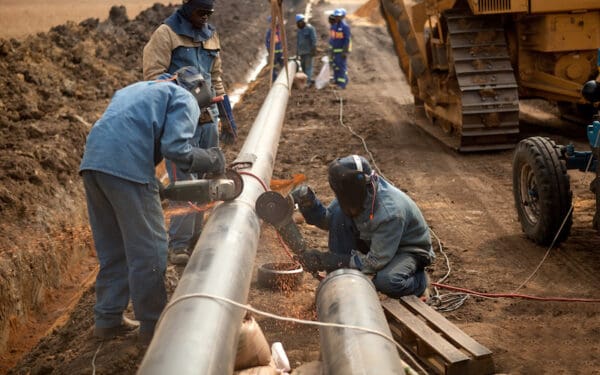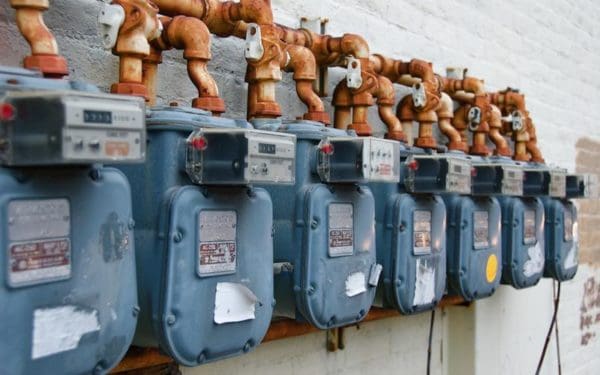
Every year the ISO Forward Capacity Auction shows that the proposed Invenergy plant is not needed. Photo Credit: Shutterstock
The ISO’s Forward Capacity Auction 13, conducted on Monday, February 4, 2019, showed once again – strongly and unequivocally – that the proposed Invenergy fracked gas and diesel oil power plant is not needed.
What Is the ISO Forward Capacity Auction?
The Independent System Operator-New England (ISO) is the entity that runs the New England electricity grid. The ISO is regulated under federal law and is responsible for ensuring that there is always enough electricity on the New England power grid to keep the lights on. Once every year, the ISO conducts a so-called “Forward Capacity Auction.” On February 4, the ISO conducted its thirteenth such auction, referred to as FCA-13 (for “Forward Capacity Auction 13”).
The purpose of these annual auctions is to ensure that there will be enough electricity available on the New England electricity grid – not now, but in the future. Specifically, FCA-13 was designed to ensure enough electricity would be available here in New England for the period June 1, 2022, through May 31, 2023. In order to do this properly, the ISO must take into account many factors: how much production capacity there is now, what power plants may “retire” (that is, close down) between now and 2021, how many new power plants are being built, and how much electricity will be needed by customers, among many other factors.
In short, the annual ISO-run capacity auction is the government-approved method for making sure that our electricity grid remains safe and reliable.
What Have Previous Auctions Shown About the Need for Invenergy?
For three years now, I have posted a blog after the auction results have been announced. Every year, the results have shown clearly that Invenergy’s plant is not needed. Three years ago, I reported on the results of the ISO’s FCA-10, conducted in February 2016. In that auction, Invenergy obtained a Capacity Supply Obligation from the ISO of 485 megawatts for one of the proposed plant’s two turbines. However, in the final results of the auction, the ISO had procured a surplus of electricity capacity for New England as a whole – of 1,416 megawatts – and for Rhode Island – 1,256 megawatts. These results clearly showed that the Invenergy plant is not needed, as even the surplus electricity amounts are larger than what would have come from Invenergy’s plant.
Then two years ago, I posted another blog entitled “ISO Forward Capacity Auction Results (Again) Show Invenergy Plant Is Not Needed.” In that blog, similar information was presented from that year’s ISO auction, FCA-11, held in February 2017. Specifically, FCA-11 resulted in procurement of a surplus of 1,760 MW for all of New England, and an even larger surplus of 1,926 megawatts in the zone that includes Rhode Island. Both of those figures, of course, were larger than Invenergy’s entire proposed project (of 1,000 megawatts).
And one year ago, I posted yet another blog featuring the results of FCA-12, held in February 2018. In that auction, Invenergy’s second turbine had actually been disqualified – in advance, by the ISO – from even participating in the auction! Nevertheless, even without Invenergy’s second turbine participating, the ISO cleared large surpluses of capacity both overall for New England and in the zone that includes Rhode Island. This was not a surprise; this was a pattern.
This Year’s Auction Results
Another year has passed, and the ISO has just published the results of FCA-13.
The first thing we know about the results is that neither of Invenergy’s two turbines was allowed to participate. On September 20, 2018, the ISO terminated Invenergy’s Capacity Supply Obligation on Turbine One that Invenergy had obtained back in February 2016. This was the first time in the entire history of the ISO that it has ever terminated the entire CSO on any power plant over the objection of the power plant owner – and it shows just how much the ISO does not need and does not want Invenergy’s power.
Then, on September 28, 2018, the ISO disqualified Invenergy’s second turbine from participating in FCA-13. With these two actions, both of Invenergy’s turbines – all 1,000 megawatts! – were ineligible even to participate in FCA-13.
This year, the ISO was trying to procure 33,750 megawatts regionwide. In fact, the ISO obtained fully 34,839 megawatts. That was a surplus of 1,089 megawatts – and all without Invenergy!
And here is one more important fact. In FCA-13, the clearing price in the auction was $3.80. This is an important piece of information because the clearing price reflects how supply and demand in the market match up. A high clearing price would have shown that there may not be enough supply to meet demand, but this was a very low clearing price. This low clearing price shows that there is plenty of supply relative to demand – more evidence that Invenergy is not needed.
The low clearing price in this month’s FCA-13 continues a downward trend in FCA clearing prices that has been consistent since Invenergy filed its application with the Rhode Island Energy Facility Siting Board on October 29, 2015. This is important because it shows that as time goes on, Invenergy is actually needed less and less!
Once Again, New England Just Doesn’t Need Invenergy’s Proposed Power Plant
These results are not at all surprising. The ISO has kicked Invenergy out of the wholesale energy markets, and the ISO continues to obtain surpluses of capacity without the proposed fracked gas plant.
As I have been saying for years, the ISO’s figures tell a very simple story. Invenergy’s fracked gas and diesel oil power plant is not, and has never been, needed.




